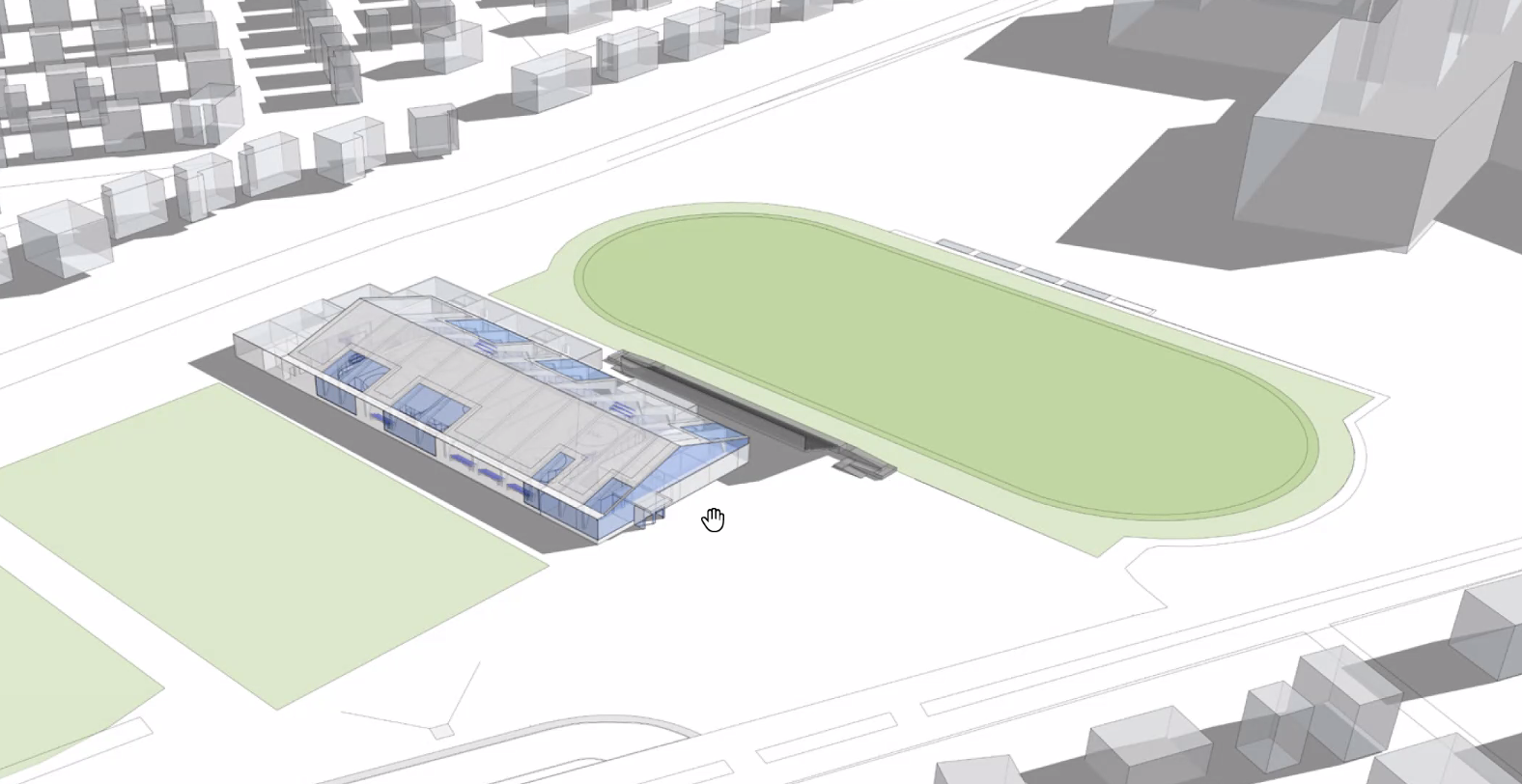Photo: The location of the projected new skating rink/athletic complex will be built at the site of the current rink
Forty-eight hours after the Municipal Rink Building Committee’s design team presented an eye-opening $41.4 million price tag for the proposed municipal rink/athletic center, the committee on Friday, Sept. 30, voted to bring to the Belmont Select Board what it believes is a far more palatable request for the 48,000 sq.-ft. facility.
After a crash course by Ted Galante Architect Studio and Owner’s Project Manager CHA in cutting costs and rejiggering calculations, the committee will present at the Monday, Oct. 3 meeting a slimmed down $32.3 million – $32,343,487, to be exact – budget to replace the dilapidated Skip Viglirolo Rink adjacent to Harris Field on Concord Avenue.
“The $41 million cost, as we all concluded, is significantly higher than what we feel we can take to the town. And therefore, we need to do some [value engineering] to get that back to where we want to be, which is in the mid-30s, if possible,” said Building Committee Chair Mark Haley.
The significant changes in the revised budget are twofold: a recalculation of the contingency and escalation reserves as well as a list of value engineering reductions totaling $5 million.
The contingency reserve – that is, money set aside to protect against future unexpected costs that arise because of change orders or unanticipated expenses – has been reduced from $10.2 million to $6.5 million by consolidating two contingency line items into one and reducing the percentage
Another cost saving was found in lowering the percentage reserve for expected price escalation for materials and services, a change promoted by Haley that brought a warning from the design team.
“We can try it,” said Galante. “I think it puts us at risk, but we just have to be very careful about how it’s designed and what path we take for construction,”
After the contingency and escalation recalculations, the base bid construction cost – how much it takes to build the structure as well as the reserves for unanticipated expenses and all “soft” costs – for the rink came in at $38.8 million, which was still more than the top of the range of the initial cost estimate presented in July to the Select Board.
To bring down the projected cost to a more palatable cost, the design team proposed five potential options after conducting a value engineering study.
The option is:
- The removal of the mezzanine deck. ($1.950 million)
- Eliminating space for DPW-related storage. ($663,000)
- Striking out the Harris Field Locker Rooms. ($1.547 million)
- Delete the removal of the White Field House. ($535,000)
- Reduce the scope of the parking area ($300,000)
Once presented, the committee voted to approve the programming cuts to reach the $32.3 million threshold.
Although the locker rooms were requested by the school district, committee member and Belmont School Committee Chair Meghan Moriarty said Schools Superintendent John Phelan told her the district was in favor of the value engineering reductions if it meant the total project price tag would be seen as more acceptable to the voters.
While five programming components were removed from the projects, they will be an opportunity for these to return later. Committee member Dynelle Long said the project can add a core shell – with foundation walls and supports – where the deleted programming would have been located to preserve the options of future construction.
That future funding could come from an existing pool of money set aside for recreational purposes.
“We should consider whether Community Preservation Act (CPA) funding is a way to pay for the plaza in front of the rink because, in fact, all of those, I believe, are eligible for CPA money,” said Anthony Ferrante, the Recreation Commission’s representative to the Committee.
It’s a question for the town whether that’s how we want to prioritize our CPA funds. But that’s a way of removing costs,” he said.








I’m curious how often on other town projects the contingencies and escalation assumptions have proven to be too high once the project was completed, rather than on target or even too low.
Adjusting the reported value is meaningless if in all likelihood the build costs will be higher than they are now assuming in order to make the total number more palatable.